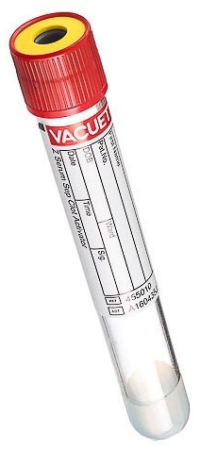
Test Code: 16814
CPT Code(s): 86038
Methodology: Immunofluorescent Assay (IFA)
Clinical Significance: Antinuclear antibodies are associated with rheumatic diseases including Systemic Lupus Erythematous (SLE), mixed connective tissue disease, Sjogren's syndrome, scleroderma, polymyositis, CREST syndrome, and neurologic SLE.
Includes: The ANA Screen, IFA, Reflex Titer/Pattern, and Reflex to Multiplex 11 Ab Cascade begins with an ANA Screen, IFA.
If ANA Screen, IFA is positive, then ANA Titer and Pattern will be performed at an additional charge (CPT code(s): 86039).
Additionally, five antibodies will be performed at an additional charge: dsDNA (CPT code(s): 86225), Sm/RNP (CPT code(s): 86235), RNP (CPT code(s): 86235), Sm (CPT code(s): 86235), and Chromatin (CPT code(s): 86235).
If any of those five antibodies are positive, the cascade stops and the results are reported.
If all five of those antibodies are negative, four additional antibodies will be performed at an additional charge: SSA (CPT code(s): 86235), SSB (CPT code(s): 86235), Scl-70 (CPT code(s): 86235), Jo-1 (CPT code(s): 86235).
If any of those four antibodies are positive, the cascade stops and the results are reported.
If all four of those antibodies are negative, the following two additional antibodies will be performed at an additional charge: Ribosomal P (CPT code(s): 83516) and Centromere B (CPT code(s): 86235).
Please note the cascade stops upon the first positive antibody result(s) found in a group and an interpretive message is applied based on this information. It is possible that antibodies in subsequent groups are also positive, but will not be added, billed, or reported. Please contact your local Quest Diagnostics Laboratory if you are interested in adding this additional testing.
Alternative Name(s): Mixed Connective Tissue Disease,MCTD
Supply: T157 - Red/Yellow SST 8mL
Preferred Specimen: Serum
Preferred Volume: 1mL
Transport Container: Serum Separator Tube (SST)
Transport Temperature: Room Temperature
Specimen Stability: Room Temperature: 4 days
Rejection Criteria:
- Hemolysis
- What are hemolyzed specimens?
- Hemolysis occurs when the red cells are damaged during sample collection causing them to rupture. Hemolyzed serum or plasma is pale pink to red rather than the normal clear straw or pale-yellow color.
- What causes a specimen to be hemolyzed?
- Mixing tubes too vigorously
- Placing tubes in the refrigerator without allowing 30 minutes at room temperature for complete clotting
- Exposure to heat or in a refrigerator that is too cold
- Using a needle with too small of a bore necessary for the venipuncture
- Using too large a tube when using a butterfly needle
- Not allowing sufficient time for alcohol to dry on puncture site
- Leaving the tourniquet on for longer than one minute
- How can hemolyzed specimens be prevented?
- For routine collections, use a 20–22-gauge needle
- Do not remove the needle from the vein with the vacuum tube engaged
- Do not collect a specimen in a hematoma
- Do not centrifuge the specimen for a prolonged period of time
- Draw the sample gently and evenly
- What are hemolyzed specimens?
- Specimens exceeding stability
- Specimens other than serum
- Unlabeled or improperly labeled specimens
- Grossly icteric; Gross hemolysis; Gross lipemia
For additional supply or collection device information, please contact DLO's Customer Service at (800) 891-2917, option 2.
The CPT codes provided are based on AMA guidelines and are for informational purposes only. CPT coding is the sole responsibility of the billing party. Please direct any questions regarding coding to the Payor being billed.
